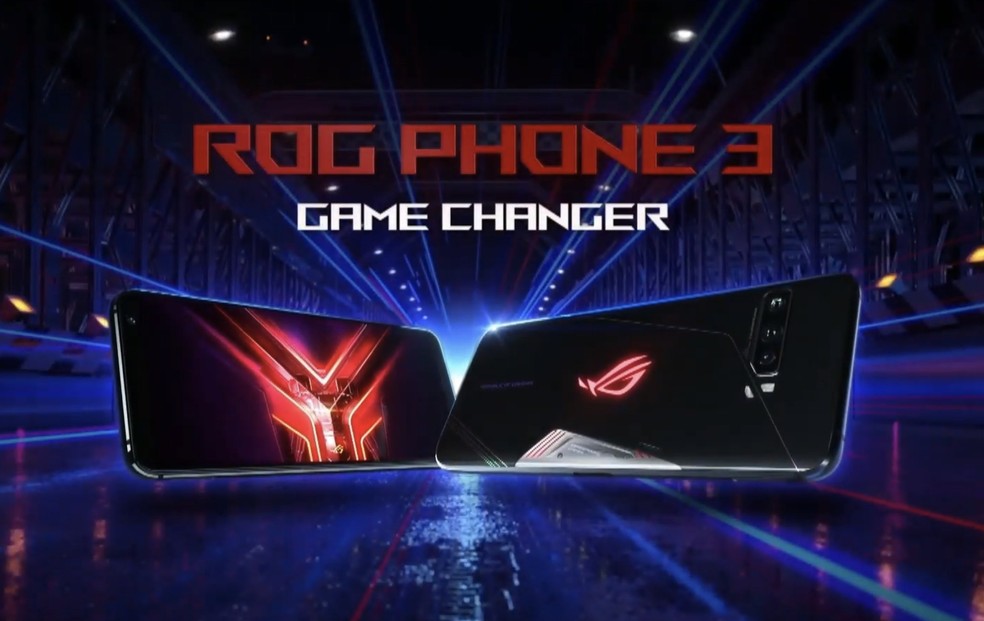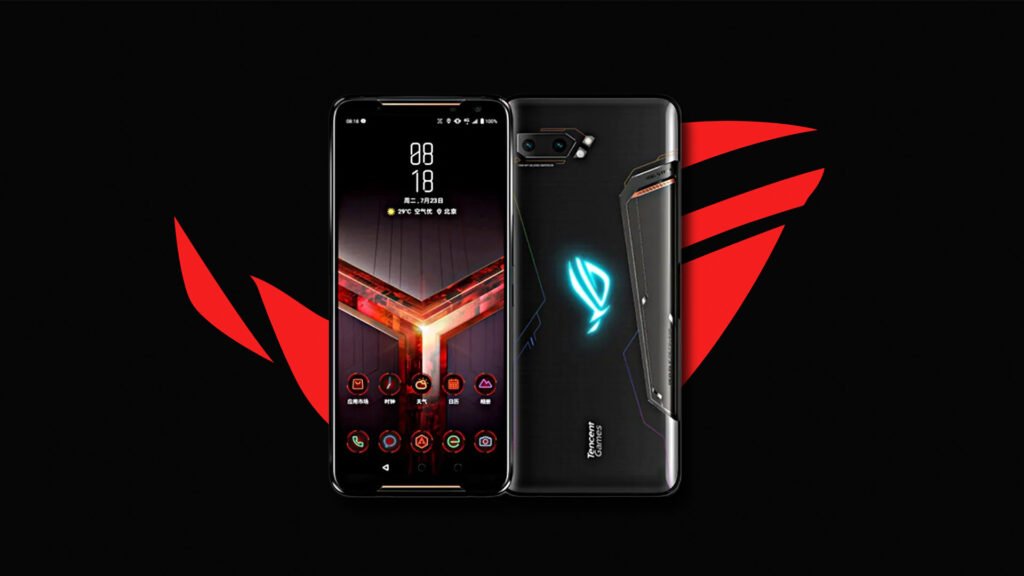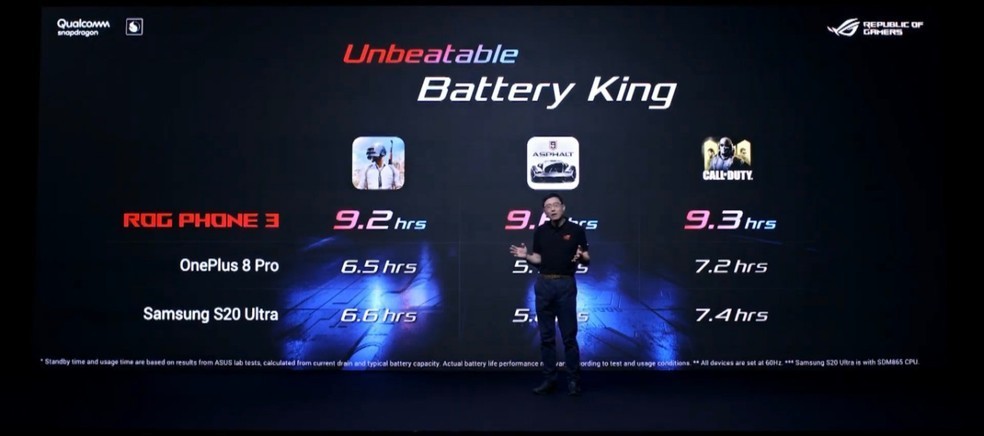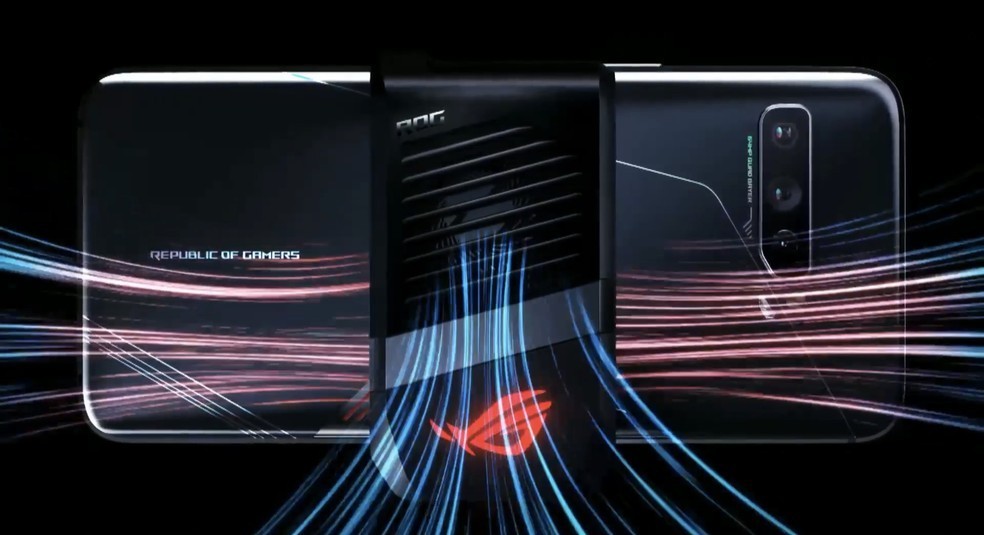Asus presented ROG Phone 3 in July to replace ROG Phone 2 in the task of positioning itself as the most powerful Android phone in the world. The technical sheet stands out for the inclusion of a faster processor and 144 Hz screen, besides reinforcements in the camera, which is now triple. However, features such as the accessory ecosystem and the large 6,000 mAh battery were retained in the new smartphone. Check out what has changed in the generation of Asus mobile phones.
Asus ROG Phone 3 vs Asus ROG Phone 2
| Specifications | ROG Phone 3 | ROG Phone 2 |
|---|---|---|
| Launch | July 2020 | July 2019 |
| Current price | from $799 | $729 |
| Screen | 6.59 inches | 6.59 inches |
| Screen resolution | 2340 x 1080 pixels (Full HD+) | 2340 x 1080 pixels (Full HD+) |
| Processor | Snapdragon 865 Plus (octa-core up to 3.1 GHz) | Snapdragon 855 Plus (octa-core up to 2.96 GHz) |
| RAM | 8, 12, or 16 GB | 8 or 12 GB |
| Storage | 256 or 512 GB | 128, 256, or 512 GB |
| Memory card | no support | no support |
| Main camera | Triple camera: 64, 13, and 5 MP | Dual camera: 48, and 13 MP |
| Front Camera | 24 MP | 24 MP |
| Battery | 6,000 mAh | 6,000 mAh |
| Operating system | Android 10 (with ROG UI) | Android 9 (Pie) (with ROG UI) |
| Dimensions and weight | 171 x 78 x 9.9 mm; 240 grams | 171 x 77.6 x 9.5 mm; 240 grams |
| Colors | black | black |
Screen and Design

The design of both mobile phones is not unobtrusive and uses LED elements to accentuate shapes and contrast. Both smartphones have a front panel with sharper edges than usual in the industry to avoid notch and offer unobstructed screens to enjoy gaming.
The screen is a relevant advantage of any generation ROG Phone given the AMOLED displays that update at higher speeds, providing more fluid gameplay and interface effects. In ROG Phone 3, the screen is 144 Hz, while ROG Phone 2 offers a display that updates images 120 times per second.
Another small difference between the two screens is that the version used for ROG Phone 3 is compatible with HDR10+ format media, while ROG Phone 2 has HDR10 support. The HDR ensures images with higher brightness levels and color depth, which results in more realistic images.
In the dimensions, the two screens are the same: 6.59 inches with Full HD+ resolution (2340 x 1080 pixels).
Cameras

The new ROG Phone 3 has a triple camera system in the rear, while ROG Phone 2 is more compact with two sensors. In the new ROG, the set is divided between a 64 Megapixels main sensor (f/1.8 aperture), a 13 MP ultra-wide camera (f/2.4), and a 5 MP macro (f/2.0).
The ROG Phone 2 features a 48 MP (f/1.8) main camera system and a 13 MP (f/2.4) ultra-wide one.
In the selfies, there is not much difference between the two. In both cases, the sensor is one with 24 MP. The variation is in the lens that is more open in ROG Phone 3 (f/2.0 against f/2.2).
Performance and Storage
In terms of processor, ROG Phone 3 is more recent and naturally takes advantage of a more current component. The new Asus gamer phone comes with the Snapdragon 865 Plus, octa-core up to 3.1 GHz. The ROG Phone 2 runs with the Snapdragon 855 Plus octa-core (up to 2.96 GHz).
Qualcomm, the manufacturer of these processors, estimates that the Snapdragon 865 Plus offers performance gains of 10% in both instruction processing and graphics performance – something essential for enjoying more demanding games.
In terms of RAM, the two phones offer various configurations. ROG Phone 3 can have 8, 12, or 16 GB. ROG Phone 2 has 8 or 12 GB editions.
There are also variations in storage. ROG Phone 3 was announced in editions with 256 and 512 GB, while ROG Phone 2 has variations with 128, 256, or 512 GB. There is no memory card input in either case.
Battery

The combination of high-frequency screens and powerful processors imposes high energy consumption rates. To meet these demands, the two generations of ROG Phones come with a superb 6,000 mAh battery.
Considering ROG Phone 2, Asus believes that this capacity is enough for 7 hours of PUBG Mobile with a 60 Hz screen. On ROG Phone 3, Asus promises 9h20 for the same game. Also, the new device has a fast 30 W charge.
Android Version
While ROG Phone 3 is already out of the box with Android 10 installed, ROG Phone 2 was also released with Android 9 (Pie). However, the update to Google’s system edition 10 is already available for the previous generation. On top of Android 10, Asus applies the so-called ROG UI, common between the two devices.
Additional Features and Accessories

The two generations of Asus mobile gamers arrive with a fingerprint reader integrated into the screen itself. In terms of interfaces, the ROG Phone already arrives with Wi-Fi 6 (802.11ax) and Bluetooth 5.1, while ROG Phone 2 carries Wi-Fi 5 (802.11ac) and Bluetooth 5.0. There is NFC connectivity in both.
A considerable difference between the two is in the sound output for headphones, absent in ROG Phone 3 but still available in ROG Phone 2. In compensation, ROG Phone 3 has an extra USB-C input for accessories and can be used for headphones with this connection.
Mobile phones are also known for their ecosystem of accessories. Both devices have options such as a full gamepad, a monitor for desktop use, and a cooling system to improve heat dissipation in the phone.
Price and Availability
ROG Phone 2 was launched by Asus but can already be found in the domestic market for a value of $769.
ROG Phone 3 has also been in the domestic market. The device can be purchased for prices starting from $799 in the version with 8 GB of RAM and 256 GB of space, $829 for the version with 12 GB of RAM, and 512 GB while the option with 12 GB of memory comes out for $1,163.
- Buy ROG Phone 2
- Buy ROG Phone 3
This post may contain affiliate links, which means that I may receive a commission if you make a purchase using these links. As an Amazon Associate, I earn from qualifying purchases.

